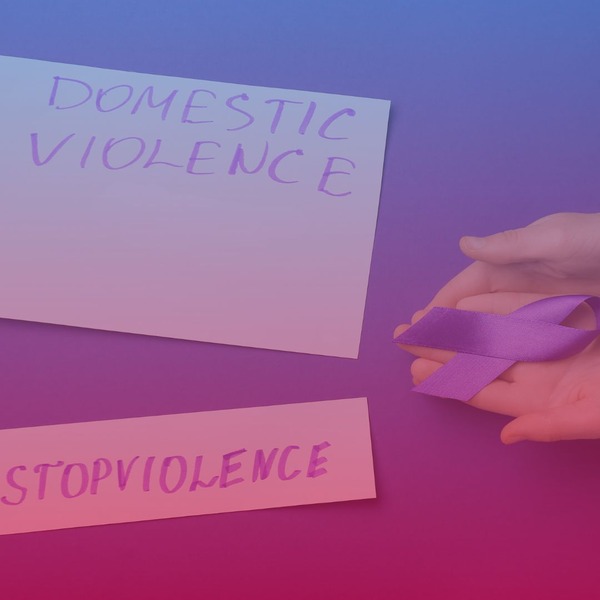
Written by: Akerke Kumbisek, Bianca Emanueli, Malaika Afridi and Róisín Keenan
(Researcher, Researcher, Researcher, and Head of the Gender Equality Working Group)
Edited by: Martina Canesi
Abstract:
This qualitative research paper utilises a critical and intersectional feminist political lens to analyse the EU’s Directive on Violence Against Women and Domestic Violence and evaluates the implications the new legislation will have. While acknowledging the benefits, it acknowledges that there are significant gaps within the directive, and that, if not amended, it leaves it more rhetoric than real change especially in regard to the definition of rape or for protections for migrant women. The paper ends with recommendations for the necessary redresses that aim to solve these gaps and bolster full prevention and protections against violence against women and domestic violence.
Section 1: Background
Introduction
The Directive on Combating Violence Against Women and Domestic Violence represents a pivotal step in the European Union’s (EU) ongoing commitment to addressing gender-based violence. By introducing standardised measures across member states, the Directive seeks to prevent violence, protect victims, and prosecute offenders while tackling contemporary challenges, such as digital violence. This analysis begins with a qualitative exploration of the Directive’s historical development, comparing it to international frameworks like the Istanbul Convention, the United States’ Violence Against Women Act (VAWA), and Australia’s National Plan to End Violence Against Women and Children, to highlight key differences. It then examines how it aligns with EU priorities, considering why such differences exist and why the Directive has emerged at this particular time. The discussion also evaluates how the Directive has been received—analysing its adoption by member states, responses from NGOs and scholars, and whether it marks meaningful progress or risks being symbolic. Finally, the analysis concludes with recommendations to enhance the Directive’s implementation and impact, ensuring it comprehensively fulfils its promise of combating violence against women.
Historical Development of EU Policies on Violence Against Women
The EU’s journey to address gender-based violence has evolved significantly over decades. Initially, efforts within the European Community were primarily focused on promoting gender equality in employment and economic rights. However, by the late 20th century, the need to address violence against women as a critical human rights issue became more pronounced. The 1997 Amsterdam Treaty marked a turning point by formally integrating gender equality into the EU’s competencies, providing a legal foundation for subsequent policies and interventions (European Union, 2023). A major milestone in addressing gender-based violence, was the adoption of the Istanbul Convention by the Council of Europe in 2011. This treaty remains the most comprehensive international framework for combating violence against women, emphasising prevention, protection, and prosecution (Council of Europe, 2011). Although the EU signed the convention in 2017, delays in ratification due to resistance from certain member states underscored the challenges of implementing a unified approach. These delays further highlighted the need for an EU-specific directive to harmonise responses across member states (European Commission, 2020).
The Directive on Combating Violence Against Women and Domestic Violence, adopted in 2024, represents a culmination of these efforts. Building on previous EU legislation, such as the Victims’ Rights Directive (2012) and the Directive on Preventing and Combating Trafficking in Human Beings (2011), the 2024 Directive reflects a more comprehensive and modernised approach to gender-based violence. It introduces innovations such as criminalising various forms of digital violence, including cyber harassment and non-consensual sharing of intimate material, while emphasising the structural roots of violence against women in patriarchal stereotypes and systemic inequality.
Importantly, the directive is the first EU legislative instrument to explicitly acknowledge that violence against women stems from “historically unequal power relations”. This language highlights the broader social and cultural factors perpetuating such violence, framing it as a structural issue requiring systemic change. However, the directive’s adoption process also reveals tensions among member states, with debates over terminology and scope. For instance, the final text excluded a unified definition of “gender”, and “sexual violence” based on consent, reflecting resistance from countries like Poland and Bulgaria that sought to limit progressive interpretations of these terms (Reem Alsalem, 2024). Thus, while the 2024 directive builds on decades of advocacy and legal advancements, setting a new standard for combating violence against women in the EU, the political and cultural debates surrounding its adoption underscore the ongoing challenges of achieving consensus on gender equality across diverse member states.
Comparison with other policies
The Istanbul Convention and the EU Directive share similar goals, yet there are important distinctions in their scope and enforcement. The Istanbul Convention applies to all Council of Europe members and focuses on broad principles of prevention, protection, and prosecution (Council of Europe, 2011). While comprehensive, the Convention does not address specific forms of digital violence, such as cyberstalking or the non-consensual sharing of intimate images, due to these crimes being less frequent a decade ago. In contrast, the EU Directive explicitly includes these offences, reflecting its commitment to tackling emerging threats in the digital era, responding to the growing rates of cyberviolence targeting women (European Union, 2023). Furthermore, the EU Directive benefits from the enforcement mechanisms of the European Commission, allowing for stronger monitoring and penalties for non-compliance—a feature absent in the Istanbul Convention (European Commission, 2020).
The Directive also aligns with emerging global trends but distinguishes itself in several ways. In the United States, the Violence Against Women Act (VAWA) prioritises funding for local victim services, law enforcement training, and protections for marginalised groups, including Native American women (U.S. Department of Justice, 2022). However, as the U.S. operates under a state-based legal framework, VAWA lacks cross-border protections and uniform definitions of gender-based violence, which are central to the EU Directive (European Union, 2023; U.S. Department of Justice, 2022). While VAWA addresses some forms of online harassment, it does not cover advanced digital offences, such as deep fake pornography, which are comprehensively criminalised under the EU Directive (European Union, 2023).
We can turn to intrastate implications: more specifically, Australia’s National Plan to End Violence Against Women and Children emphasises long-term prevention through education and inclusivity, particularly for Indigenous and rural communities (Australian Government, 2022). However, its non-binding nature limits its enforceability compared to the EU Directive, which imposes legally binding obligations on member states (European Union, 2023). Additionally, while Australia’s plan highlights societal transformation, it does not address digital violence as extensively as the EU Directive does. Similarly, Canada’s National Action Plan on Gender-Based Violence, launched in 2021, focuses on federal, provincial, and territorial collaboration to tackle systemic inequalities (Canadian Women’s Foundation, 2021). While it shares the EU Directive’s emphasis on data collection and victim support services, Canada’s plan lacks the EU’s robust enforcement mechanisms and comprehensive provisions for cyber violence.
Reem Alsalem (2024), the UN Special Rapporteur on violence against women and girls, has highlighted the EU Directive’s innovative approach to modern challenges, particularly its inclusion of digital violence and intersectional perspectives. However, she also criticised the Directive’s omission of an EU-wide definition of sexual violence based on consent, noting that this limits its ability to fully address coercive circumstances. Moreover, she pointed out inconsistencies in terminology and the insufficient attention given to undocumented migrant women, highlighting specific areas where the Directive could improve, which will be analysed throughout this paper. The Directive’s inclusion of digital violence and its focus on victim-centred measures, such as legal aid and trauma-informed care, set a global precedent for addressing modern forms of gender-based violence (European Union, 2023). By leveraging the EU’s institutional strength and requiring uniform protections across member states, the Directive addresses both traditional and contemporary challenges, emphasising accountability and compliance (European Commission, 2020). However, limitations such as the absence of sustainable funding mechanisms and gaps in addressing workplace harassment highlight the need for further revisions to fully realize its potential.
Section 2:
Why now? EU Priorities and International Commitments
This section explores how the Directive aligns with EU priorities and the timing of its introduction, analyzing why addressing such violence has become a core aim of the European Union. The new Directive appears to be a logical progression, building upon the foundation established by both international and European law. Notably, it aligns with the EU’s core values of equality, as outlined in Article 2 TEU and Articles 21 and 23 of the Charter of Fundamental Rights. Additionally, it reflects international commitments, such as those formulated in the Convention on the Elimination of All Forms of Discrimination Against Women (CEDAW), the Istanbul Convention, and the ILO Convention on Violence and Harassment (European Commission, n.d.).
The Directive is also part of the von der Leyen Commission’s broader initiative to build a “Union of Equality” through gender mainstreaming, which is encapsulated in the EU Gender Equality Strategy 2020-2025. This strategy aims to end gender-based violence, challenge gender stereotypes, close gender gaps in the labour market, achieve equal participation across different sectors of the economy, address gender pay and pension gaps, and promote gender balance in decision-making and politics. (European Commission, 2020).
The Gender Equality Strategy adopts a dual approach of gender mainstreaming combined with targeted actions. Intersectionality is a horizontal principle for its implementation, ensuring that the Strategy’s objectives are coherent with the EU’s external policy on gender equality and women’s empowerment. As of 2024, the EU is bound by ambitious and comprehensive standards to prevent and combat violence against women. These include judicial cooperation in criminal matters, asylum and non-refoulement procedures, and public administration practices. Advocacy for measures to combat violence against women and girls (VAWG) has grown more vocal in recent years, prompting the EU to respond with this new Directive. However, the critical question remains: is this response sufficient to address the root causes of gender-based violence, or does it simply provide symbolic action?
Section 3: Symbolic Action or Practical Change?
Firstly, it is important to acknowledge the numerous strengths of this new Directive, chief among them being its greater legal bindingness compared to the Istanbul Convention. Moreover, the language used around domestic violence separates it from the blanket terminology of violence against women, and thus, male victims of domestic abuse are recognised and more protected. It also contains a strong response to cyber abuse, acknowledging digital forms of violence against women, and includes recognition of crucial intersectional dimensions in prevention and protection efforts. Whilst it does not contain a legally binding obligation on states to implement a consent-based rape definition, an obligation to educate on consent, which will have a presumably positive impact on societies of member states, is included (Kontoulis, European Parliament, 2024).
While the new Directive is an important legal and political step, some critics argue that it may merely reiterate outdated approaches. Similar to past legislative efforts, such as those intended to combat period poverty, the effectiveness of this new Directive is under scrutiny, and feminist observers have raised concerns about its practical outcomes for women. The challenge lies in reasoning through the complex oppositions of justice and injustice, equality and inequality, individual rights and the common good. The debate surrounding gender-based violence is not just about how individuals should treat one another; it also concerns what the law should be and how society should be organized. These are fundamentally questions about justice. One potential criticism of the Directive is that it might simply reinforce the modernist, masculinist, and positivist cultural hegemony that has dominated international organizations (IOs) and Western discourse since the Bretton Woods system emerged (Bacchi and Goodwin, 2016, 65). Studies have demonstrated that patterns of discursive devaluation of women’s labour are recurrent in World Bank reports, which often frame “gender inequality” as an abstract category that overlooks historical and institutional processes. The amorphous definition of “gender equality” complicates efforts to determine how gender inequality is problematized in specific contexts, leading to a lack of clarity and potential for misinterpretation (Bacchi and Goodwin, 2016, 65).
Gap 1: Intersectionality
A significant challenge in the new Directive is not necessarily what it includes, but rather what it leaves out. In particular, the emphasis on intersectionality remains underdeveloped. Although the term “intersectionality” is used, its application is vague and insufficiently integrated into the measures outlined in the Directive, and it risks to become a catch-all phrase that conveys little concrete meaning. The intersectional nature of the measures is not always evident, and the Directive’s impact on diverse groups of women, particularly those in vulnerable or marginalized positions, remains unclear. This gap in the Directive’s approach is particularly concerning because it overlooks the deep-seated presuppositions that influence the representation of “gender inequality”. These assumptions are rooted in positivist, modernist, and masculinist frameworks, which hinder a more nuanced, intersectional analysis of women’s labour, especially in the informal economy. As Peterson (2012) argues, such frameworks are based on dichotomized, hierarchical thinking, where complex social realities are simplified into categories that can be easily quantified and predicted. These assumptions result in ahistorical and essentialized understandings of gender inequality, sidelining the contributions of feminist economic analysis. The dominant positivist and modernist frameworks that underlie much of the discourse around gender inequality reinforce hierarchical gender structures and obscure the role of informal labour—particularly women’s caregiving and reproductive work. This is evident in the World Bank’s reports, which often fail to address the intersectional nature of gender inequality. Instead, these reports treat gender as a static and isolated category, without considering the broader social, political, and economic structures that shape it (Bibler, Sarah, Elaine Zuckerman, 2013), (De Almagro, Maria, Caitlin Ryan, 2019).
What about migrant women?
The Directive falls short in providing comprehensive protection for all, despite its rhetoric around intersectionality, and the prime example is provided by the treatment of migrant women, often the most vulnerable and in need of protection, that result being sidelined by this piece of legislation. Many NGOs have acknowledged its benefits but also highlighted its gaps in their “Joint civil society reaction to the adoption of the EU Directive on combating violence against women and domestic violence” (Human Rights Watch, 2024). They argue that the Directive has prioritised ‘national security’ over the necessary degree of anonymity required to protect a migrant woman. More specifically, it fails to safeguard migrant women by not including provisions to prevent their personal data from being shared with authorities, leaving them even more vulnerable.
Moreover, the language used when the Directive talks about providing permanent residence for a migrant woman who reports being a victim of violence, is notably cautious. Part 35 of the Directive states that “member states can decide to grant… residence…”, with the use of “can” instead of ‘should’ highlighting a lack of a clear EU stance. This leaves migrant women in a precarious position, as they may still fear deportation when seeking protection, undermining their willingness to report abuse. It is particularly interesting that the Directive is so clear in its aim to prevent revictimization, as stated in section 29, yet without necessary additional amendments, migrant women will be at risk of being deported, and thus less likely to come forward. As Louise Bonneau, Advocacy Officer at PICUM, said: “Who would report violence and abuse if they risked being locked up and deported instead of getting support and protection?” (PICUM, 2024). There is also no mention of Indigenous women and the heightened risk of Indigenous women being targets of human trafficking, nor appreciation nor attention given to their cultural needs when developing preventative or responsive measures.
Gap 2: Consent-based definition of rape
There is still no EU-wide, legally binding, consent-based definition of rape, which leaves victims and survivors more vulnerable and prioritises sovereignty over victims. Whilst this Directive is a progressive step for the EU, to ignore this downfall is to ignore the need to solidify rape victims’ rights. “A difficult political agreement was reached in February 2024, after the criminalisation of rape had been removed from the text. This had been the main stumbling block during the negotiations, with the Council objecting to the criminalisation of rape as being outside the EU’s legal remit, while the Parliament and Commission held the opposite view.” (European Parliament, 2024). If this was not removed, perhaps none of the benefits would be reaped by citizens of the EU, however we can be certain that this leaves behind rape victims in the states which have not ratified the Istanbul Convention or aligned their stance on rape to be consent-based (Bulgaria, Czechia, Hungary, Latvia, Lithuania, and Slovakia).
This was a missed opportunity to change this. After years of resistance by certain member states, it is unlikely they will not be more inclined to do so now, with many continuing to rely on force-based approaches that remain either the central tenet in their courts, or a tangential one. A 2016 Eurostat survey highlighted how respondents in Romania, Bulgaria and Hungary are the most likely to justify sex without consent, with two thirds of these states lacking a consent-based approach to rape (Zamfir, 2024). This alarming reality shows a critical gap that should have been filled (Zamfir, 2024), but the Directive merely states that “the agreement also obliges Member States to take rape prevention measures and to raise awareness of the central role of consent” (European Parliament, 2024). While the obligation is significant, “raising awareness on the central role of consent” does not establish legal grounds for the prosecution of a rape case.
Gap 3: The Dichotomy of Formal and Informal Work
Another significant gap within the Directive is the dichotomous view of formal and informal economic activities. This binary division presents the informal sector as merely a gendered method of survival, without fully engaging with its significance. By framing formal and informal labour as mutually exclusive, the Directive risks excluding care work from the analysis altogether. This exclusion reflects the broader tendency to neglect and undervalue the costs associated with informal economic activities, despite their essential role in any economic recovery or development. Women’s informal labour, which includes caregiving and domestic work, is not only a cornerstone of household survival but also a key contributor to the functioning of the broader economy. The failure to address the informal sector in a meaningful way is a fundamental oversight in the Directive and reflects the persistent invisibility of women’s labour in economic policy. The dichotomous treatment of formal and informal work perpetuates the undervaluation of feminized labour, further entrenching gender inequality and reinforcing existing power dynamics, thus failing to address financial and economic systemic violence against women (Martin De Almagro & Ryan, 2019).
Unaddressed Barriers to Implementation
Even if the above issues were addressed, the issue of implementation which comes with any EU directive of any nature, remains. Financial constraint acts as an initial barrier to implementation, even if that state has genuine political will. Positive obligations on states cause financial issues, with negative obligations usually implemented more easily,(Millis, 2020)(Lavrysen, 2016). This therefore is a burden on states who cannot afford these measures, and they may resist the Directive. While this does not detract from the importance of implementation, it serves as a realistic analysis of issues that arise for states, and a problem that the EU must help with.
Additionally, lack of political agreement and accountability act as further barriers. Other directives have faced difficulties with implementation, especially when they contain progressive measures, and certain EU member states argued that the EU is overstepping their jurisdiction and interfering with their sovereignty (Fassbender, 2023). There also are issues with accountability or lack of punishment, seen for example when states did not fully implement elements of the 2011 Victims Rights Directive. A history of this leads to one question; will we really see an EU ready to swiftly and severely act if this is not implemented?
Section 4:
Moving Beyond Symbolic Action – Recommendations
Ultimately, the new Directive’s focus on formal employment and its appeal to efficiency arguments obscure the deeper power relations that underlie gender-based violence. By failing to challenge existing gender hierarchies and development agendas, the Directive risks being yet another symbolic measure that does little to transform the structures of inequality that perpetuate violence against women. The lack of a robust, intersectional approach, one that protects all women, including migrant women, instead of removing them for ease of passing the directive, leaves unaddressed critical questions about gender, power, and justice. Justice, in particular, is an issue when noting the lack of the EU wide consensus on rape definitions and its devastating impact on victims and survivors.
In challenging the assumptions behind the Directive, we must ask not only whether it effectively combats violence against women, but also whether it can dismantle the larger social and economic structures that perpetuate such violence. It can be argued that the Directive, while a step in the right direction, ultimately falls short of achieving the transformative change needed to address the root causes of gender-based violence and inequality. To do so, it must move beyond symbolic action and engage more deeply with intersectionality, power, and justice. The following recommendations aim to address this.
- Adopt an inclusive and non-discriminatory intersectional approach:
Despite Europe’s growing diversity, the Directive falls short in providing protection for all, as although the Directive acknowledges intersectionality, it should strengthen this approach by developing policies that cater to marginalised women, including those based on race, ethnicity, class, disability, etc. Additionally, it needs to come up with specific provisions that address the problems experienced by them.This calls for the need to acknowledge specific struggles of migrant women, especially those who face deportation when reporting acts of violence: Member states must be obligated to ensure their protection through clear and enforceable measures. Similarly, the Directive needs to take Indigenous women’s unique needs regarding exploitation and violence into account and impress upon states to adopt this inclusive and culturally appropriate approach.
- Need for clear terminology:
The Directive must ensure its binding nature by using clear terminology that stresses the need for states to abide by certain principles.
- Improve the scope of labour:
The Directive excludes care work as it outlines formal and informal labour as mutually exclusive, and hence, undermines informal activities. This calls for the Directive to expand the scope of labour by incorporating informal labour and include provisions that not only acknowledge and support informal work, but also offer protection to such labourers, who tend to be disproportionately women..
- Adopt and strengthen accountability mechanisms:
Lack of accountability and implementation will result in the weakening of the Directive which instead requires a strong accountability mechanism that holds states accountable for not abiding by the Directive. Similarly, some penalties should also be in place for non-compliant states. This could ultimately improve its implementation across the EU and assist in better addressing the issues of gender-based violence.
- Adopt feminist principles:
The Directive has been criticised for reiterating outdated approaches to gender-based violence and being unable to address related problems. This brings to attention the need to incorporate feminist principles that address the broader causes of gender inequality along with gender-based violence.
- Need for data collection and research:
By carrying out comprehensive research and field surveys, policymakers could develop a better understanding of the specific areas that require more attention and need to be incorporated into the Directive. This could ultimately lead to the acknowledgement of a broad range of problems experienced by a range of individuals, hence, avoiding an outdated and one-size-fits-all approach.
- Address financial constraints that hinder implementation:
Financial constraints have been highlighted for acting as an impediment to the smooth implementation of the Directive. In order to address this, a funding support system needs to be established which could financially help states with limited finances and encourage them to implement it.
- Include a broader definition of consent and rape:
As there is an absence of a clear definition of rape based on consent, it leaves rape victims in some countries remain at risk. This, as a result, calls for a clear and broad definition of rape based on consent which needs to be adopted by all member states. Therefore, it would address the inconsistency in rape laws across Europe and offer some protection to victims.
Section 5: Conclusion
As a Directive, it is more legally binding, more specific, and potential non-implementation will not go unpunished, leading to a possible infringement procedure, and if necessary, financial sanctions via the Court of Justice. Its larger scope addresses new areas of violence that were previously unreported or lacked protections, such as digital violence, or specific targeting of public figures e.g. female politicians, and the overall stressed importance of prevention and supportive measures. The Directive takes a more progressive stance especially compared with the Istanbul Convention. As the civic society joint statement called it, it represents a “groundbreaking step.”
However, we must simultaneously acknowledge that it does have significant gaps, such as the issues it fails to address for migrant women, and the consent-based rape definition still missing from this binding legislation. These are not minor issues and will have ripple effects for citizens impacted by this violence which should not be diminished.
Overall, this can be used to great effect. For now, it is a welcome development, understood as a baseline level of protective and preventative measures that must be built upon. As far as accountability goes, the real test is whether the EU has the political willpower and desire to follow through on their words. This is a directive that fails to protect to the degree necessary, and as any other EU directive will, it faces barriers and challenges. It must not be mistaken as achieving total protection and must be supplemented with protections for migrant women, and definitions surrounding rape, and as the needs of victims and survivors, both preventative and responsive, develop it too must develop. However, it is the strongest stance the EU has taken and the most progressive one since the Istanbul Convention. It provides greater scope for future legislation on this and gives hope to campaigners. It is important, and at the same time, flawed.
Bibliography
Australian Government. (2022). National Plan to End Violence against Women and Children 2022–2032. Available online via: https://www.dss.gov.au/national-plan-end-gender-based-violence
Bacchi, C., & Goodwin, S. (2016). Poststructural policy analysis: A guide to practice. Palgrave Macmillan.
Bibler, Sarah, and Elaine Zuckerman. ‘The Care Connection: The World Bank and Women’s Unpaid Care Work in Select Sub-Saharan African Countries’. WIDER Working Paper. Helsinki: The United Nations University World Institute for Development Economics Research (UNU-WIDER), 2013. https://hdl.handle.net/10419/93728.
Council of Europe. (2011). The Istanbul Convention: Action against violence against women and domestic violence. Available online via: https://www.coe.int/en/web/istanbul-convention/about-the-convention
Canadian Women’s Foundation. (2021). Canada’s National Action Plan on Gender-Based Violence. Available online via: https://www.canada.ca/en/women-gender-equality/gender-based-violence/intergovernmental-collaboration/national-action-plan-end-gender-based-violence.html
European Commission. (2020). A Union of Equality: Gender Equality Strategy 2020-2025. Available online via: https://ec.europa.eu/newsroom/just/items/682425/en
European Commission. (n.d.). Ending gender-based violence. European Commission. https://commission.europa.eu/strategy-and-policy/policies/justice-and-fundamentalrights/genderequality/genderbasedviolence/endinggenderbasedviolence_en#:~:text=The%20Commission%20proposed%20new%20legisation,against%20women%20and%20domestic%20violence
European Commission. (2020). EU gender equality strategy 2020-2025. European Commission. https://ec.europa.eu/info/policies/justice-and-fundamental-rights/gender-equality/gender-equality-strategy-2020-2025_en
European Journal of International Relations, 25(4), 1059–1079. https://doi.org/10.1177/1354066119836474 Peterson, V. S. (2012). Gendered states: Feminist (re)visions of international relations theory. Lynne Rienner Publishers.
European Parliament Plenary Report, At A Glance, (2024), EU Rules on Combatting Violence Against Women.
European Parliament. (2023). Combating violence against women: Key policies and legislative measures. Available online via: https://www.europarl.europa.eu/RegData/etudes/BRIE/2023/739392/EPRS_BRI(2023)739392_EN.pdf
European Parliament (2024). Challenges to EU Member States’ Sovereignty: Implications of EU Policies. European Parliamentary Research Service. Available at: https://www.europarl.europa.eu/RegData/etudes/ATAG/2024/760440/EPRS_ATA(2024)760440_EN.pdf
European Union. (2023). Directive on combating violence against women and
domestic violence. Official Journal of the European Union. Available online
via: https://eur-lex.europa.eu/eli/dir/2024/1385/oj/eng
Fassbender, B. (2023). ‘The German Constitutional Court and the Limits of European Integration: The Lisbon Judgment in Context’. European Papers, 8(3), pp. 733–752. Available at: https://www.europeanpapers.eu/fr/system/files/pdf_version/EP_eJ_2023_3_SS2_1_Bardo_Fassbender_00733.pdf
Human Rights Watch, Joint Statement – Civil Society Reaction to the Adoption of the EU Directive on Combatting Violence against Women and Domestic Violence, 2024.
Kontoulis, N.K. European Parliament, (24-04-2024.) Parliament approves first ever EU rules on Combatting Violence Against Women, (press release.)
Lavrysen, L. (2016). Human Rights in a Positive State: Rethinking the Relationship between Positive and Negative Obligations under the European Convention on Human Rights. Intersentia.
Martin De Almagro, M., & Ryan, C. (2019). Subverting economic empowerment: Towards a postcolonial-feminist framework on gender (in)securities in post-war settings.
Millis, S. (2020). ‘Positive that the Government is obligated to support you? Think again’. Centre for Constitutional Studies.
Peterson, V. Spike. ‘Rethinking Theory: INEQUALITIES, INFORMALIZATION AND FEMINIST QUANDARIES’. International Feminist Journal of Politics 14, no. 1 (March 2012): 5–35. https://doi.org/10.1080/14616742.2011.631276.
PICUM, New EU Directive on Violence Against Women leaves out migrant women, 2024.
Reem Alsalem, UNOHCHR. (2024). European Directive on combating violence against women and domestic violence welcome but falls short of full potential, says UN expert. Available online via: https://www.ohchr.org/en/press-releases/2024/05/europeandirective-combating-violence-against-women-and-domestic-violence
UN Women. (2020). Gender-based violence and international frameworks. Available Online via: https://www.unwomen.org/sites/default/files/Headquarters/Attachments/Sections/Library/Publications/2020/RESPECT-implementation-guide-Global-and-regional-frameworks-en.pdf
U.S. Department of Justice. (2022). Violence Against Women Act (VAWA) reauthorisation. Available online via: https://www.justice.gov/crt/violence-against-women-act-reauthorization-act-2022-vawa-2022-housing-rights-subpart
Zamfir, European Parliamentary Research Service, (2024.) Definition of Rape in the Legislation of EU Member States.

 Human Rights Challenges in Addressing SLAPPs in Media, NGOs and Journalism in the EU
Human Rights Challenges in Addressing SLAPPs in Media, NGOs and Journalism in the EU  Defining European Citizenship: Its Significance and the EU’s Efforts to Foster Identity Through Education
Defining European Citizenship: Its Significance and the EU’s Efforts to Foster Identity Through Education  Shaping the future of healthcare: The European Union’s role in AI implementation
Shaping the future of healthcare: The European Union’s role in AI implementation  SEMICONDUCTORS AS KEY STRATEGIC ASSETS: NAVIGATING GLOBAL AND EUROPEAN SECURITY CHALLENGES
SEMICONDUCTORS AS KEY STRATEGIC ASSETS: NAVIGATING GLOBAL AND EUROPEAN SECURITY CHALLENGES 


